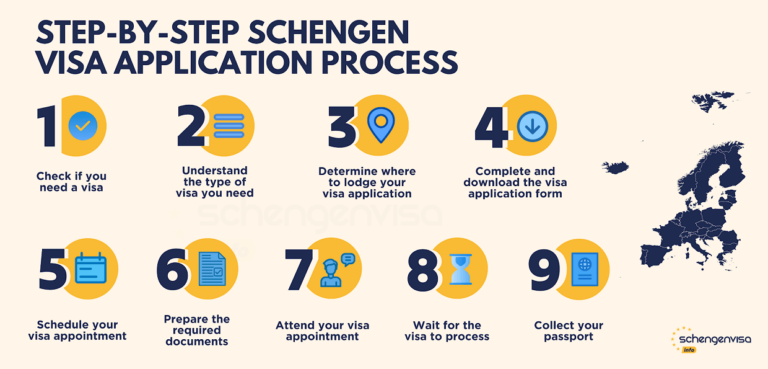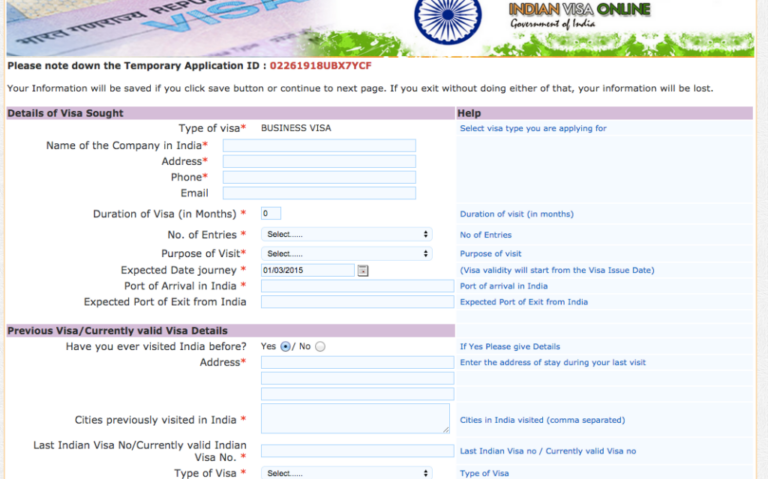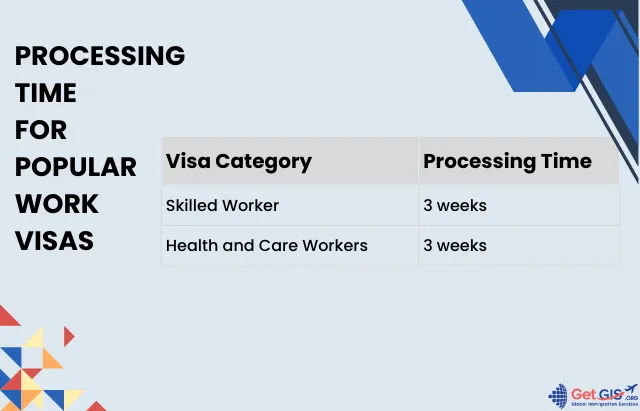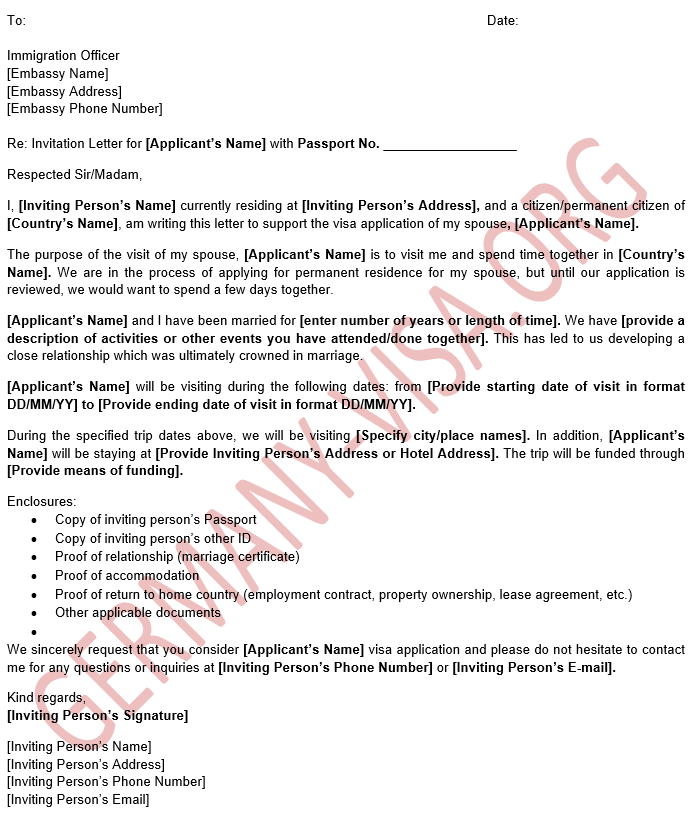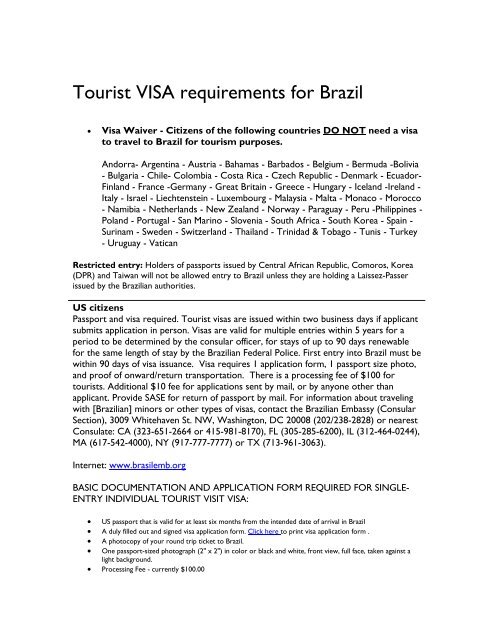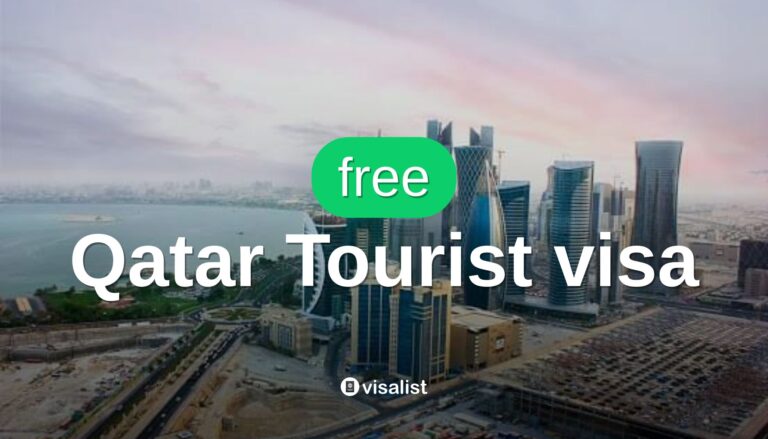Master the Process: Your Guide to the Tourist Visa Application
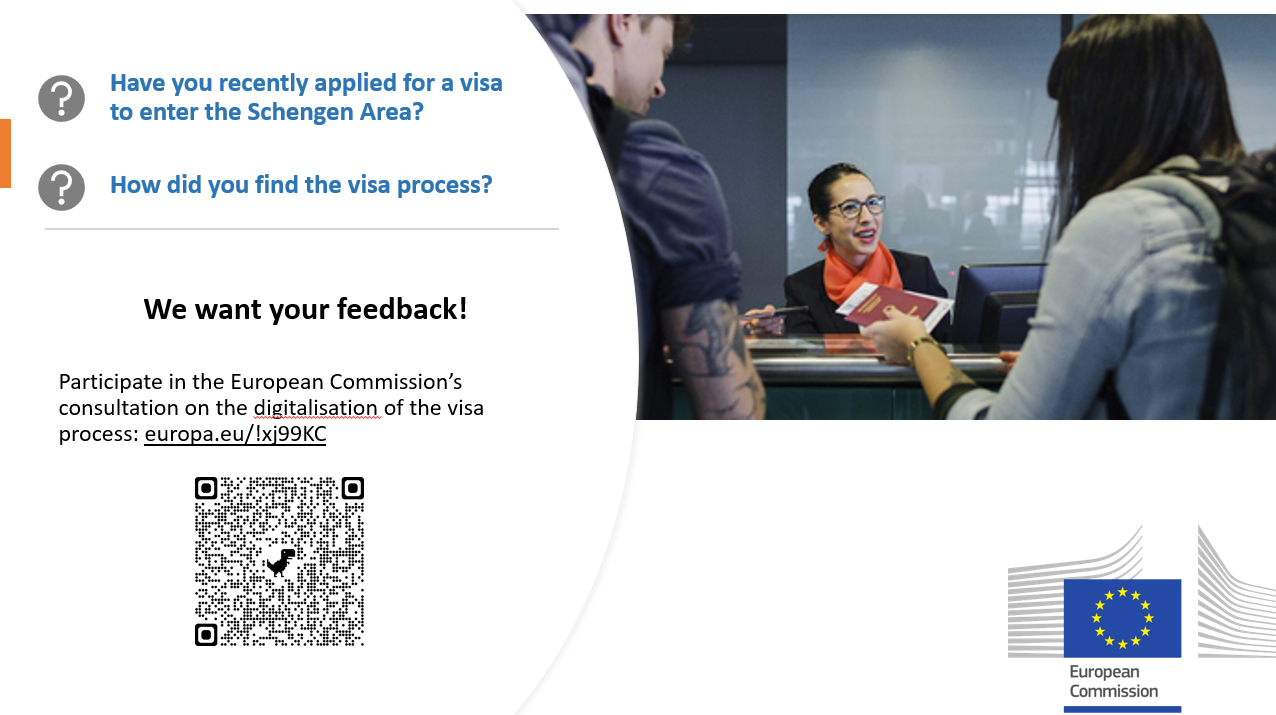
Understanding Visitor Visas
Purpose of Visitor Visas
Visitor visas allow foreign nationals to enter a country temporarily for various purposes, primarily for tourism or business. In the United States, the B-1/B-2 visitor visa is commonly issued. The B-1 visa covers business-related activities such as consulting with business associates, attending professional conventions, or settling estates. Conversely, the B-2 visa serves individuals traveling for recreation, visiting family and friends, or seeking medical treatment (Travel.State.Gov).
Typically, a visitor visa is necessary unless you qualify for entry under the Visa Waiver Program. Understanding the purpose of your visit can help you determine the appropriate visa category and streamline the tourist visa application process.
Visa Waiver Program
The Visa Waiver Program (VWP) permits citizens of certain countries to travel to the United States for tourism or business for stays of 90 days or less without obtaining a visa. However, travel under this program requires approval through the Electronic System for Travel Authorization (ESTA). For instance, if you fall under the VWP, you can avoid the visa application process, making your travel planning more efficient.
Below is a list of key aspects of the Visa Waiver Program:
| Criteria | Details |
|---|---|
| Length of Stay | Up to 90 days |
| Purpose | Tourism, business |
| ESTA Approval | Required |
| Participating Countries | Most EU countries, Australia, Japan, South Korea, etc. |
Understanding whether your country participates in the VWP can save you time and effort when planning your trip. For more detailed information on specific country requirements, visit tourist visa requirements.
To fully grasp the requirements and ensure a smooth application process, check if you need additional documentation such as a sponsor letter for a tourist visa or financial documents. Here’s a helpful internal link for more on applying for a tourist visa: tourist visa application form.
Applying for a Visitor Visa
Navigating the tourist visa application process involves several essential steps, particularly when applying for the B-1/B-2 travel visa. Below, you’ll find a breakdown of key components: the B-1/B-2 visa overview, completing Form DS-160, and preparing for the B-1/B-2 visa interview.
B-1/B-2 Travel Visa Overview
The B-1/B-2 visitor visa allows individuals temporary entry into the United States for business (B-1) or pleasure or medical treatment (B-2).
- B-1 Visa: For those consulting with business associates, attending conferences, or settling estates
- B-2 Visa: For recreational purposes like tourism, visiting friends or relatives, medical treatment, and social activities
Applicants must demonstrate their qualifications to a consular officer, proving they meet the requirements set by the U.S. Immigration and Nationality Act.
Completing Form DS-160
Form DS-160 is the Nonimmigrant Visa Electronic Application. Here are the steps to complete this form:
- Access the Form: You can find Form DS-160 online on the Consular Electronic Application Center website.
- Personal Information: Fill in your biographical details, family information, employment history, and travel history.
- Upload Digital Photo: Ensure the photo meets the U.S. State Department’s specifications (Boundless).
- Review and Submit: Double-check the information for accuracy and completeness before submitting the form.
| Section | Required Information |
|---|---|
| Personal Information | Name, DOB, Passport Number |
| Family Details | Spouse, Parents |
| Employment History | Job Title, Employer |
| Travel History | Previous U.S. Visits, International Travel |
| Digital Photo | Must meet U.S. Government requirements |
For further details on required documents, check our guide on tourist visa application form.
B-1/B-2 Visa Interview
Once Form DS-160 is submitted, the next step involves scheduling and preparing for the visa interview at a U.S. Embassy or Consulate. Here’s what you need to know:
Required Documents:
- Confirmation page from Form DS-160
- Fee payment receipt
- Valid passport
- Two printed photographs (meeting format and attire guidelines) (Boundless)
- Supporting documents (like previous U.S. visas, travel itinerary, and evidence of financial support)
Key Aspects:
- Interview Questions: Be prepared to answer questions about the purpose of your trip, details of your stay, and evidence that you have strong ties to your home country.
- Photograph Requirements: Consider using a professional visa photo service to ensure the photos meet U.S. government specifications (Boundless).
Visit our page on documents for visa interview for a comprehensive checklist of what to bring.
By understanding the steps involved in applying for a visitor visa, including the importance of accurate documentation and thorough preparation for the interview, you can improve your chances of a successful application.
Necessary Documents for Visa Application
When applying for a tourist visa, having the correct documents is essential for a smooth and successful application process. This section outlines the necessary documents required, including biographical information, photograph requirements, and visa application fees.
Biographical Information
To begin the tourist visa application process, you must provide detailed biographical information. This includes filling out the Nonimmigrant Visa Electronic Application (Form DS-160). While completing the form, you will need to reference the following:
- Personal details (name, date of birth, nationality)
- Family information (spouse, children, parents)
- Employment history
- Travel history and details of previous US visits, if any
For a detailed guide, refer to our tourist visa checklist.
Photograph Requirements
Photographic identification is a crucial component of the application process. Your submission must comply with specific criteria outlined by the U.S. government. The guidelines include aspects such as size, format, and attire. Here are the key requirements:
- Photo size: 2 x 2 inches (51 x 51 mm)
- Format: JPEG (if digital) or printed on a solid white background
- Attire: No uniforms or head coverings (unless worn daily for religious purposes)
Consider using a professional visa photo service to ensure your photographs meet these guidelines. For further details, see our guide on tourist visa photo requirements.
| Criteria | Requirements |
|---|---|
| Photo size | 2 x 2 inches (51 x 51 mm) |
| Format | JPEG (digital) or printed |
| Background | Solid white |
| Head covering | Only for daily religious purposes |
Visa Application Fees
Applying for a tourist visa involves paying specific fees. The visa application fee varies depending on the visa type and the applicant’s nationality. Here is a general overview:
| Visa Type | Application Fee (USD) |
|---|---|
| B-1/B-2 Visa | $160 |
| Other fees | Varies |
To learn more about the exact fees applicable to your situation, refer to our detailed breakdown of tourist visa cost.
Before your visa interview, gather all necessary documents, such as the DS-160 confirmation page, printed photographs, and current/old passports. Having these items prepared and organized will help ensure a smoother interview experience. For more information on what to expect during the interview, visit our guide on documents for visa interview.
Applying for your visa might seem overwhelming, but knowing the required documents and following the process thoroughly can significantly ease your journey. For additional guidance on completing your application, check out our resources on how to apply for tourist visa and tourist visa support documents.
Specific Country Visa Requirements
Australia Electronic Travel Authority (ETA)
If you are a U.S. passport holder planning to visit Australia, you must apply for an Electronic Travel Authority (ETA) in advance. The ETA allows multiple stays of up to 90 days within one year. As of April 2022, the ETA fee is $150 Australian dollars (about US$100) (AFAR). Ensure you meet all tourist visa requirements before applying. For more detailed guidance, check the tourist visa checklist.
| Visa Type | Validity | Stay Duration | Fee (AUD) | Fee (USD) |
|---|---|---|---|---|
| ETA | 1 Year | Up to 90 Days | $150 | $100 |
Bhutan Visa Requirements
Travelers with U.S. passports heading to Bhutan need to obtain a visa from the Department of Tourism. The visa fee is $40, and travelers must adhere to the travel requirement of a $100 per person, per night fee for sustainable development (AFAR). Ensure you gather all supporting documents before application.
| Visa Type | Fee (USD) | Sustainable Development Fee (USD) |
|---|---|---|
| Bhutan Tourist Visa | 40 | 100 per person, per night |
Bolivia Tourist Visa
U.S. citizens visiting Bolivia can apply for a Bolivian tourist visa either online or at a consulate in advance. This visa allows stays of up to 30 days per visit, not exceeding 90 days per calendar year. The visa fee is $160, which is accepted in cash at the border. Don’t forget to review your financial requirements before the trip.
| Visa Type | Validity | Fee (USD) | Maximum Stay per Entry |
|---|---|---|---|
| Bolivian Tourist Visa | 1 Year | 160 | Up to 30 Days |
Brazil E-Visa Application
Starting April 10, 2025, U.S. citizens traveling to Brazil will need to obtain an e-visa. The e-visa costs $81 and has a 10-year validity due to the reinstatement of the visa requirement by Brazil (AFAR). Visit the e-visa application page for additional instructions.
| Visa Type | Validity | Fee (USD) |
|---|---|---|
| Brazil E-Visa | 10 Years | 81 |
Understanding the tourist visa application process for each country is essential for a smooth and hassle-free experience. Be sure to check out our other resources on tourist visa cost, tourist visa invitation letter, and tourist visa processing time for more information.
Further Country Visa Information
China Tourist Visa (L-Visa)
If you plan to visit China, you will need to apply for a tourist visa (L-visa). American citizens must apply through the Chinese Embassy and Consulates-General in the US. The requirements include:
- A completed COVA Visa Form
- A US passport with at least two blank visa pages
- Proof of residency in the US
- Payment of the $140 fee for multiple entries (AFAR)
| Visa Type | Validity | Entry Fees |
|---|---|---|
| Single Entry | Up to 6 months | $140 |
| Double Entry | Up to 6 months | $140 |
| Multiple Entry (1 year) | 1 year | $140 |
| Multiple Entry (2 years) | 2 years | $140 |
| Multiple Entry (10 years) | 10 years | $140 |
For detailed steps on the tourist visa application process, consult the official website of the Embassy of the People’s Republic of China or the Consulates-General in the US.
India Visa Options
Depending on the duration and purpose of your stay, you have two main visa options for traveling to India: the paper visa and the e-tourist visa. Be sure to check entry requirements with the Indian Embassy as rules may change.
- Paper Visa: Valid for 10 years for US citizens.
- e-Tourist Visa: Valid for 60 days, available for short tourism visits.
India visa fees and processing times vary, so consult the Indian Embassy website for the most current information. Visit our tourist visa checklist to ensure you have all required documents.
Indonesia Visa on Arrival
For US citizens, Indonesia offers a convenient Visa on Arrival (VoA) option. This visa is suitable for tourists and is valid for a stay of up to 30 days. It can be extended once for an additional 30 days:
| Visa Type | Validity | Fee |
|---|---|---|
| Visa on Arrival | 30 days (extendable once by 30 days) | $35 |
To obtain the Visa on Arrival, you will need:
- A passport valid for at least 6 months from your date of entry
- Proof of onward travel
- Payment of the visa fee at the port of entry
For more information on VoA and other visa on arrival countries for US citizens, visit the official Indonesian government website.
By understanding the specific requirements for each country, you can better prepare for your travels and ensure a smooth tourist visa application process. For additional resources and tips on applying for a tourist visa, explore related topics on our site.
Additional Visa Application Considerations
Visa Application Process Factors
Understanding the various factors involved in the tourist visa application process can significantly improve your chances of approval. Key elements include:
-
Application Completeness: Your application should be thorough and include all necessary information and supporting documents. Compile these documents in advance to streamline the process. Visit our tourist visa checklist to ensure you have everything you need.
-
Correct Visa Category: Choose the appropriate visa category based on your travel purpose. Misclassification can lead to delays or denials.
-
Financial Proof: Demonstrate you can support yourself financially during your stay. This includes proof of funds for expenses such as airfare, accommodations, and other costs. Review our page on tourist visa financial requirements for more details.
-
Accurate Biographical Information: Ensure all personal information matches your official documents. Inconsistencies can result in delays or denials.
-
Detailed Itinerary: Provide a clear and detailed itinerary for your trip. Visa officers need to understand your travel plans, including your reason for visiting, where you’ll stay, and for how long (Boundless).
-
Documents for Visa Interview: Prepare all required documents for your visa interview, including your passport, application form, photographs, and supporting documents. More information is available on our documents for visa interview page.
Visa Application Denial Reasons
Being aware of common reasons for visa application denial can help you avoid potential pitfalls during the application process:
-
Incomplete Application: An incomplete or incorrectly filled application form is one of the most common reasons for denial. Always double-check your form before submission.
-
Insufficient Financial Evidence: Failure to show you can financially support yourself during your trip can lead to denial (Boundless). Ensure you provide comprehensive financial documentation from our sponsor letter for tourist visa page.
-
Lack of Ties to Home Country: Visa officers look for evidence that you will return to your home country after your trip. This includes family ties, employment, or property ownership.
-
Poor Interview Performance: The visa interview is crucial. Be punctual, answer questions clearly, and provide all required documents. Find helpful tips on our tourist visa interview tips page.
-
Misrepresentation: Any form of misrepresentation, exaggeration, or false information can lead to denial and may impact future applications.
| Common Denial Reasons | Description |
|---|---|
| Incomplete Application | Failure to provide all required information |
| Insufficient Financial Proof | Inability to show adequate funds for the trip |
| Lack of Ties to Home Country | Insufficient evidence showing you will return to your home country |
| Inadequate Interview Response | Poor performance or failure to answer questions clearly at the interview |
| Misrepresentation | Providing false or exaggerated information on your application |
To minimize the risk of denial, gather as much evidence as possible and meticulously prepare your application. For more insights, visit our pages on tourist visa application form and us embassy tourist visa. Utilize our resources to navigate the application process effectively.
Visa Interview Process
As part of the tourist visa application process, the visa interview is an essential step that can determine the outcome of your application. To increase your chances of success, it’s important to understand what to expect during the interview and avoid common mistakes.
Interview Expectations
During your visa interview, you will meet with a consular officer at a U.S. Embassy or Consulate. The purpose of the interview is to verify the information provided in your application and assess your eligibility for the visa. Here’s what you can expect:
- Personal Questions: The officer will ask about your travel plans, reasons for visiting, and details about your stay in the United States. Be ready to provide a clear and detailed itinerary for your trip. For more information, see tourist visa requirements.
- Supporting Documents: Bring all necessary documents, such as proof of employment, financial statements, and evidence of ties to your home country. You can find a complete list of documents here.
- Biometric Data: You may need to provide biometric data, such as fingerprints. Learn more about the process here.
- Intent to Return: Establish that you have strong ties to your home country and that you intend to return after your visit. This is crucial for demonstrating that you do not plan to overstay your visa. For more tips, visit our tourist visa interview tips.
| Expectation | Description |
|---|---|
| Personal Questions | Travel plans, reasons for visiting, stay details |
| Supporting Documents | Proof of employment, financial statements, ties to home country |
| Biometric Data | Fingerprints and other biometric data |
| Intent to Return | Evidence of strong ties to your home country |
Interview Mistakes to Avoid
Making mistakes during your visa interview can result in a denial. Here are some common pitfalls to avoid:
- Inadequate Preparation: Failing to prepare for the interview can lead to incomplete or inconsistent answers. Review your application and rehearse potential questions.
- Inconsistent Information: Providing contradictory information can raise red flags. Ensure that your answers align with the information in your application and supporting documents.
- Insufficient Documentation: Not bringing all required documents can delay or jeopardize your visa approval. Double-check the list of necessary documents on our tourist visa checklist.
- Lack of Clear Itinerary: Visa officers want to understand your travel plans. Present a detailed itinerary to avoid any suspicion about your visit (Boundless).
- Misrepresenting Information: Being dishonest or misleading can lead to an immediate denial. Always be truthful and transparent.
- Tardiness: Arriving late can reflect poorly on your application. Make sure to arrive early to allow time for security procedures.
| Mistake | Description |
|---|---|
| Inadequate Preparation | Incomplete or inconsistent answers |
| Inconsistent Information | Contradictory information |
| Insufficient Documentation | Missing required documents |
| Lack of Clear Itinerary | Vague travel plans |
| Misrepresenting Information | Dishonesty or misleading answers |
| Tardiness | Arriving late to the interview |
By understanding what to expect during the visa interview and avoiding common mistakes, you can improve your chances of a successful application. For more detailed guidance, explore our articles on tourist visa financial requirements and us tourist visa for parents.
Post-Interview Visa Process
Administrative Processing
Administrative processing may be required for some visa applications, affecting processing times. During your visa interview, the consular officer will inform you if further administrative processing is needed. This additional review can vary in duration based on individual circumstances.
| Administrative Processing | Duration (days) |
|---|---|
| Average Time | 30 – 60 |
| Extended Time | Up to several months |
Visa Issuance and Passport Return
Once your tourist visa is approved, there are a few steps to follow before you receive your passport back:
- Visa Issuance Fee: You may need to pay a visa issuance fee depending on your nationality.
- Passport Return: Arrangements for the return of your passport and visa should be made, which might include courier services (US Department of State).
For detailed information about your specific embassy or consulate, visit their website. If you need expedited processing, details can be found at expedited tourist visa processing.
Port-of-Entry Protocol
Upon arrival in the United States, a Customs and Border Protection (CBP) officer will inspect your documents at the port of entry. It is essential to have:
- Valid Passport: Ensure your passport is valid for at least six months beyond your intended stay.
- Visa Documentation: Have your visa paperwork readily accessible.
- Supporting Documents: Carry proof of travel purposes, such as hotel reservations and return tickets.
For more tips, refer to tourist visa restrictions.
Status Change and Re-Entry Requirements
After entering the U.S. on a tourist visa, certain conditions apply if you wish to change your status or re-enter the country:
- Status Change: If you need to change your status (e.g., from B-2 visitor to F-1 student), you must apply through U.S. Citizenship and Immigration Services (USCIS) while maintaining your stay.
- Re-Entry Requirements: Should you leave and wish to re-enter the U.S., ensure your visa allows multiple entries. If you hold a single-entry visa, you must apply for a new visa to return.
For in-depth information on status change, check out tourist visa extension process.
Understanding these steps in the post-interview visa process can help you navigate the tourist visa application process smoothly. Be sure to keep all your documents organized and seek assistance from the respective consular services as needed.

